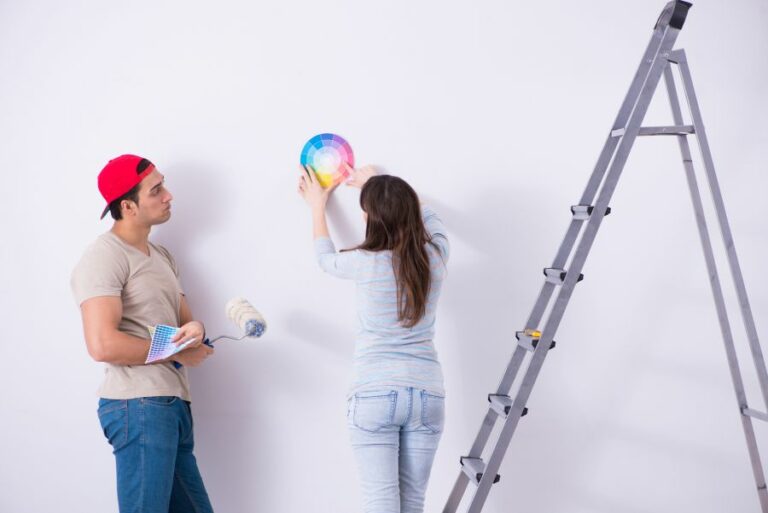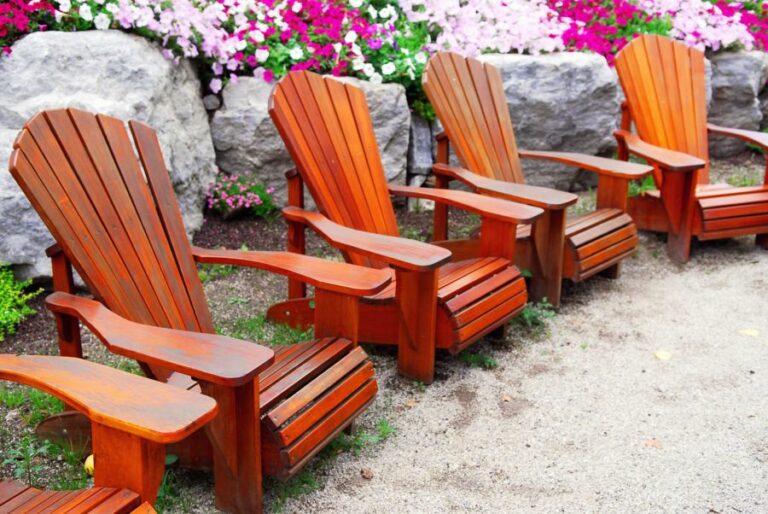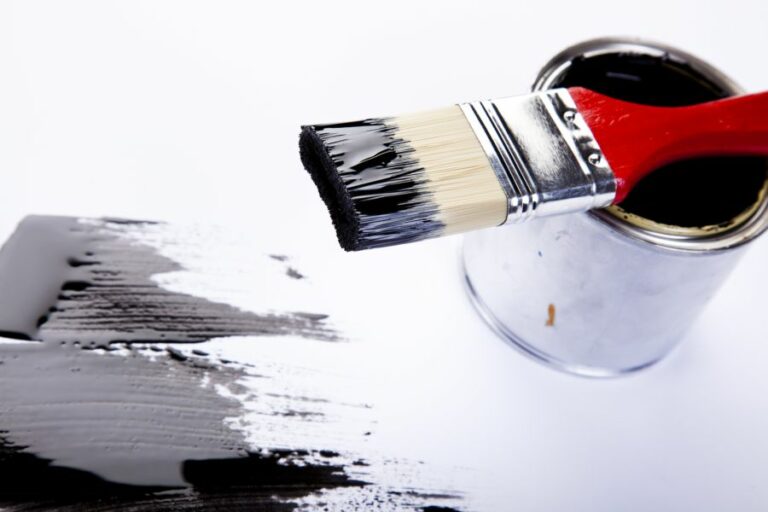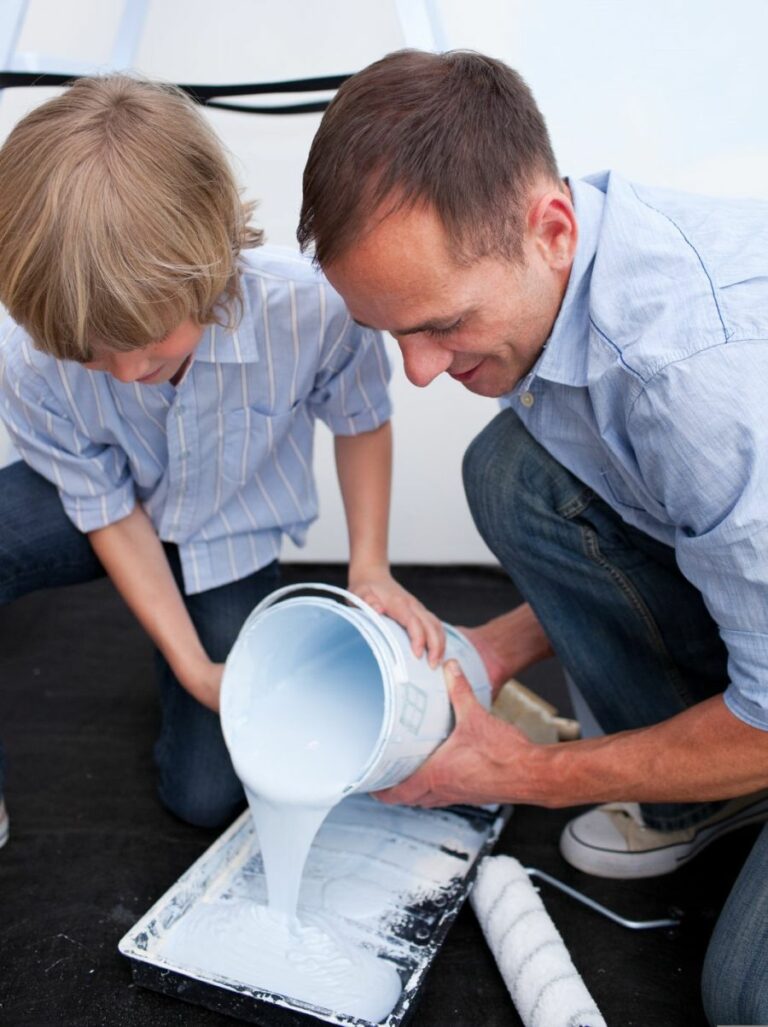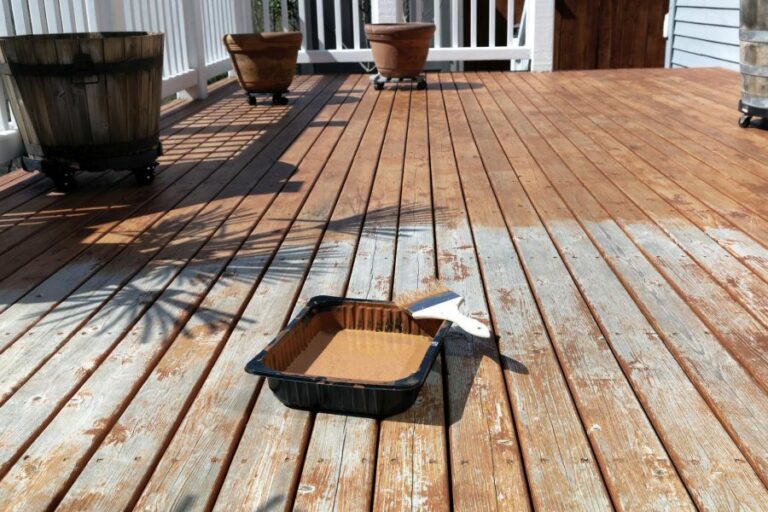Outdoor Paint For Kids, 25 Things You Should Know
Looking for a fun and creative outdoor activity for your little ones? Our latest blog post, ‘Outdoor Paint for Kids’, is a must-read for all parents and caregivers! Discover the joys of transforming your backyard into an open canvas by introducing child-safe, vibrant, and washable paint options. We discuss the benefits of encouraging artistic expression outdoors, provide step-by-step guides for setting up, and share our tried-and-tested, non-toxic paint recipes.
Outdoor paint for kids:
Outdoor painting is a fun and beneficial activity for children that enhances creativity and motor skills. Popular outdoor paint options for kids include sidewalk chalk paint, washable tempera paint, and finger paint. Key supplies for outdoor painting include containers, brushes, and drop cloths. To ensure safety and enjoyment, choose age-appropriate materials, provide supervision, and establish a dedicated painting area. Providing various types of paint and observing safety measures can make outdoor painting sessions a success for kids of all ages.

Discover the joy of outdoor painting with kids using our expert tips and suggestions. Learn about versatile paint types, surfaces, DIY recipes, and engaging activity ideas to make the experience a colorful adventure. Transform your backyard into a vibrant creative space now!
Contents
- 1 Exterior Painting Supplies for Children
- 2 What Type of Paint is Considered Safe for Children?
- 3 What is the Most Suitable and Safe Paint for Children to Apply on Wooden Surfaces?
- 4 What Kind of Paint is Easily Washable and Suitable for Children?
- 5 What is the Ideal Type of Paint for Outdoor Craft Projects?
- 6 Which Type of Paint Offers Easy Clean-Up for Children’s Use?
Exterior Painting Supplies for Children
Outdoor painting can be an enjoyable and enriching activity for children, boosting their creativity and motor skills. Offering kids opportunities to explore various painting techniques and materials can help to cultivate their artistic talents.
• Types of Outdoor Paint for Kids
There are various types of outdoor paint suitable for children. Some popular options include sidewalk chalk paint, washable tempera paint, and finger paint. These paints come in a range of vibrant colors and can be used on various surfaces, such as concrete, wood, and even grass.
– Sidewalk Chalk Paint
Sidewalk chalk paint is a favorite among children, as it is easy to apply and clean. This type of paint comes in both liquid and powder form the latter requiring water to be activated.
Sidewalk chalk paint can be brushed or sprayed onto surfaces, and it washes away quickly with water, making it an ideal choice for temporary outdoor artwork.
Recommended Brands: Crayola, Chalk City, and RoseArt
– Washable Tempera Paint
Washable tempera paint is another popular choice for outdoor painting due to its versatility and ease of clean-up. This non-toxic paint is water-soluble and can be used on various surfaces, such as cardboard, paper, and wood.
Washable tempera paint is perfect for creating outdoor murals, banners, and other collaborative art projects.
Recommended Brands: Crayola, Prang, and Sax
– Finger Paint
Finger paint is an excellent option for younger children, as it encourages sensory play and fosters fine motor skills. This non-toxic paint can be used on surfaces like paper, cardboard, or even directly on the ground to create a more immersive outdoor painting experience.
As with other outdoor paints, finger paint is washable, making clean-up a breeze.
Recommended Brands: Crayola, Colorations, and Faber-Castell
• Essential Supplies for Outdoor Painting
To make the most of your outdoor painting sessions, consider investing in the following supplies:
– Paint Containers
Containers with lids are crucial for storing and transporting paint. They also help to prolong the paint’s lifespan by keeping it fresh and preventing spills.
– Brushes, Rollers, and Sponges
A variety of brushes, rollers, and sponges are useful for applying different paint textures and techniques. For younger children, oversized brushes and sponge rollers make it easier to grasp and manipulate the tools.
– Drop Cloths
Drop cloths are essential for catching any spills or drip during painting sessions, protecting both surfaces and clothing. Consider using old sheets, towels, or inexpensive plastic tarps as drop cloths.
– Spray Bottles
Spray bottles filled with water provide a convenient way to clean hands, tools, and surfaces during painting sessions, as well as a fun method to apply paint directly onto surfaces for unique effects.
• Tips for Safe and Fun Outdoor Painting
When planning an outdoor painting session for kids, consider the following safety tips and suggestions:
– Choose Age-appropriate Materials
Always select paint materials that are suitable for the age, skill level, and interests of the children participating. Non-toxic, washable paint is recommended for younger children, while older, more experienced artists may appreciate higher-quality materials.
– Provide Adequate Supervision
Ensure that children are supervised at all times during outdoor painting activities to prevent accidents and paint ingestion.
– Dress Appropriately
Encourage kids to wear old clothes, aprons, or smocks during painting sessions to protect their clothing from stains.
– Set Up a Dedicated Painting Area
Designating a specific area for painting activities can help to keep paint materials and mess contained, making clean-up easier.
– Teach Proper Clean-up Techniques
Teaching children to clean up after themselves helps to instill a sense of responsibility and respect for their surroundings. Provide ample clean water, soap, sponges, and towels for easy clean-up.
• In Conclusion
Outdoor paint for kids is an excellent way to encourage creativity, and there are various types of paint suitable for outdoor use. Providing a range of materials and employing proper safety measures can make outdoor painting sessions fun and enjoyable for children of all ages.
With the right paint, supplies, and guidance, your little artists will be well on their way to creating masterpieces in the great outdoors.
What Type of Paint is Considered Safe for Children?
As parents and caregivers, it’s crucial to prioritize the safety of the products that children use daily. This includes everything from the toys they play with to the materials they use in their creative pursuits.
Painting is a fun and engaging activity for children, and choosing the right type of paint is an essential aspect of ensuring their safety.
• Safety Considerations for Children’s Paint
When selecting paint for kids, several safety factors should be kept at the forefront:
– Non-toxic Ingredients
The most important aspect is ensuring that the paint is made from non-toxic and safe ingredients. These are often labeled as water-based or acrylic paints.
For very young children who may be prone to putting things in their mouths during play, you may even want to consider edible paint options made from natural and safe ingredients.
– Certifications and Seals of Approval
Look for relevant safety certifications and seals, such as the AP (Approved Product) Seal from the Art and Creative Materials Institute (ACMI). This certification ensures that the product has been independently tested and found to be safe for children.
– Age Recommendations
Paint products often come with age recommendations on the packaging. These are important to consider when selecting paint for different age groups. As kids grow, their skill sets expand, and they’re less likely to ingest or misuse art materials.
Always take age recommendations into account when choosing paint.
• Types of Safe Paint for Kids
A variety of safe paint options are available to cater to different age groups and painting activities. Here are some types to consider:
– Washable Tempera Paint
Washable tempera paint is perfect for younger children as it is water-based, non-toxic, and washes easily from skin and clothing. It’s available in a wide range of vibrant colors and dries to a matte finish. It’s versatile and can be used on a variety of surfaces, such as paper, cardboard, and even wood.
I recommend this type of paint for kids under six years old or those just starting their painting journey.
– Acrylic Paint
Acrylic paint is a popular choice for older children and teenagers as it is versatile, water-based, and dries quickly. It’s available in various colors, including metallic and glittery shades, and works well on many surfaces, including canvas, paper, wood, and fabric.
As acrylic paint can be slightly more challenging to remove from clothing, I would recommend this type for children over six years old who have some painting experience.
– Watercolor Paint
Watercolor paint is a great option for introducing young children to painting, as it’s non-toxic, easy to clean up, and creates a beautiful, transparent effect on paper. It’s available in both pan and tube format, and you only need to add water to activate the paint.
Watercolors are a suitable choice for kids ages three and older, provided that they have supervision to help them manage the water usage for mixing and painting.
– Edible Paint
For toddlers and very young children prone to putting items in their mouths, edible paint made with food-grade ingredients is the safest choice. You can find commercial, pre-made edible paint products or create your own using recipes found online that often use flour, cornstarch, and food coloring.
Edible paint is best suited for children under 3 years of age or those with sensory needs that require the assurance of a completely safe-to-ingest option.
• Tips for Creating a Safe Painting Environment
Beyond selecting the right type of paint, it’s essential to create a safe painting environment for children. Here are some tips to make the painting experience enjoyable and secure:
- Provide appropriate child-sized brushes, sponges, or tools for their age group
- Ensure children wear aprons or old clothes that can withstand paint splatters
- Use a washable or disposable table cover to protect surfaces
- Provide proper ventilation in the painting area
- Encourage kids to wash their hands after painting sessions
- Closely supervise very young children to prevent ingestion or inappropriate use of materials
- Store art materials and supplies out of reach of young children when not in use
In conclusion, selecting safe paint options for children is an essential aspect of providing a creative and fun painting experience.
By considering factors such as non-toxic ingredients, safety certifications, and age-appropriate recommendations, you can ensure that kids can enjoy the benefits of painting while minimizing any potential risks.
What is the Most Suitable and Safe Paint for Children to Apply on Wooden Surfaces?
Painting on wood can be a fantastic creative outlet for children, allowing them to express themselves while working with a versatile and unique material. However, choosing the right paint for the job can be a challenging task, especially when safety and quality are of the utmost importance.
• Water-Based Paints: A Safe and Easy Choice
– Acrylic Paint
When it comes to painting on wood, acrylic paint is often the go-to choice for many parents and educators. These water-based paints offer several key benefits that make them an ideal choice:
- Safety: Acrylic paints are non-toxic and safe for children to use. They do not contain harmful chemicals or emit strong odors, making them suitable for indoor use.
- Easy Cleanup: As acrylic paint is water-based, it can be easily cleaned up with water and soap. This makes the painting process less messy and more enjoyable for both kids and adults alike.
- Quick Drying: Acrylic paint dries relatively quickly, allowing children to complete their projects in a shorter period of time.
In addition, acrylic paints provide vibrant, long-lasting colors that adhere well to wood surfaces. They can be thinned with water to create a more translucent effect or applied in thicker layers for greater opacity.
I recommend using good quality acrylic paint, such as Liquitex Basics or Golden Fluid Acrylics, for the best results on wood projects.
– Tempera Paint
Tempera paint, also known as poster paint, is another water-based option that is suitable for children to use on wood. It is made from a combination of pigments, water, and a binder, usually a natural glue or gum.
- Safety: Like acrylic paint, tempera paint is non-toxic and safe for children to use.
- Affordability: Tempera paint is often more affordable than acrylic paint, making it a popular choice for budget-conscious families and schools.
However, tempera paint does not adhere as well to wood as acrylic paint and may require a layer of primer before application. It is also less durable and less resistant to moisture, making it a less suitable choice for outdoor projects.
• Oil-Based Paints: Vibrant and Durable
– Oil Paint
Oil paint is a popular choice for artists who work on wood, as it provides rich, vibrant colors and a smooth, glossy finish. However, it is essential to consider the following factors when deciding whether to use oil paint for your child’s project:
- Safety: Many oil paints contain volatile organic compounds (VOCs) and solvents, which can be harmful if ingested or inhaled. If you decide to use oil paint, make sure to choose one that is labeled as low-VOC or solvent-free.
- Cleanup: Oil paint requires the use of solvents, such as turpentine or mineral spirits, for cleanup. These solvents can be dangerous if not used properly and should be handled with caution.
- Drying Time: Oil paint has a much longer drying time than water-based paints, sometimes taking days or even weeks to fully cure.
Given these factors, I would recommend using oil paint only for more advanced or older children who have experience handling potentially hazardous materials and are willing to wait for their artwork to dry.
• Alternative Options: Paint Pens and Chalk Paint
– Paint Pens
Paint pens can be a fun and convenient alternative to traditional paints for children working on wood projects. They contain water-based or oil-based paint and are available in a wide range of colors.
- Safety: Look for paint pens that are labeled as non-toxic and safe for children to use.
- Precision: The fine tip of the paint pen allows for greater control and precision, making it suitable for intricate designs or detailed work.
- No Brushes Required: Paint pens eliminate the need for brushes and can be easily transported, making them an ideal choice for on-the-go projects.
– Chalk Paint
Chalk paint is a versatile decorative paint that dries to a matte, chalky finish. It is often used for upcycling furniture and home decor projects but can also be used for painting on wood.
- Safety: Chalk paint is typically water-based and non-toxic, making it safe for children to use.
- Adherence: Chalk paint adheres well to wood surfaces without the need for priming or sanding.
- Versatility: Chalk paint can be easily distressed or sanded to create a vintage, shabby-chic look, making it an interesting and creative option for your child’s wood project.
• Final Thoughts
When choosing the best paint for your child to use on wood, consider the factors of safety, ease of use, and durability. In most cases, water-based acrylic paint is the ideal choice, offering a safe and easy-to-clean solution with excellent adherence to wood.
However, alternative options such as paint pens and chalk paint can provide unique and creative solutions for a variety of wood projects. The key is to choose the paint that best suits your child’s abilities, interests, and the context of their project.
Paint Brand | Type of Paint | Pros | Cons |
|---|---|---|---|
Crayola Washable Paints | Water-based paint | Easy to clean, non-toxic, affordable | May not be as durable as other paints |
Apple Barrel Acrylic Paint | Acrylic paint | Vibrant colors, adheres well to wood, non-toxic | Can be harder to clean, not washable |
FolkArt Multi-Surface Paint | Multi-surface paint | Can be used on multiple surfaces, non-toxic, easy to clean | Can be more expensive than other options |
What Kind of Paint is Easily Washable and Suitable for Children?
Art truly provides a platform for everyone to express themselves, especially for children. Providing them with safe and washable paints to work with is crucial to ensure their creativity blossoms while keeping cleanup hassle-free for parents.
• Types of Washable Paints for Kids
– Watercolor Paints
Watercolor paints are a type of washable paint that often come in sets with multiple colors, formulated to dissolve easily in water. Ideal for children’s painting activities, they are generally non-toxic, smooth, and easy to clean up.
– Tempera Paints
Tempera paints are a preferred choice for school projects or art classes. These versatile paints are also water-soluble, capable of producing bold and bright colors. Because of their quick-drying nature, they are safe and easy to work with, making them suitable for various types of projects.
– Acrylic Paints
Although acrylic paints are generally not as washable as watercolor or tempera paints, they can still be a good option for older children who are more conscientious about their art supplies. Because acrylic paints dry quickly and are water-resistant after drying, they can be used for more advanced art projects.
– Finger Paints
Finger paints are specifically formulated for young children who are still exploring their artistic abilities. These non-toxic and edible paints are designed for easy application with little fingers, making them a safe and fun option for toddlers.
Moreover, most finger paints are washable and easily cleaned off various surfaces like walls, furniture, and clothing.
• Benefits of Using Washable Paints for Kids
– Easy Cleanup
The main appeal of washable paints is that they are easy to clean up after an art session. Water-soluble paints can be easily wiped off surfaces with a damp cloth or rinsed away with water if they’re still wet.
This makes cleaning up a breeze for parents and caregivers while still allowing children to explore their creative side.
– Encourages Creativity
Washable paints provide a safe and accessible medium for children to express themselves. They can experiment with colors and brushstrokes without the fear of making a mess that cannot be cleaned up easily. This builds confidence and creative development in the early years.
– Non-Toxic
Most washable paints available on the market today are non-toxic, making them safe for children’s use. This means that parents and caregivers can let kids explore and enjoy the art-making process without worrying about harmful chemicals or substances in the paints.
• Potential Concerns with Washable Paints
– Staining
While most washable paints are designed for easy cleanup, they can still potentially cause stains on certain materials or surfaces. It is crucial to test the paint on a small, inconspicuous area first to check for potential staining or discoloration.
– Allergies
Even though washable paints are generally non-toxic, there’s always the possibility that some children may have allergies to specific ingredients. To ensure your child’s safety, it’s essential to check the label for any potential allergens or irritants.
• Top Recommendations for Washable Paints
Here are some of my top recommendations for washable paints that are perfect for children:
- Crayola Washable Watercolors: These non-toxic, easy-to-clean watercolor paints come in various sets and are perfect for kids who are just beginning to explore the world of painting.
- Prang Washable Tempera Paints: Known for their vibrant colors and versatility, Prang’s tempera paints come in a variety of sizes, making them an ideal choice for school projects or at-home art sessions.
- Crayola Washable Finger Paints: Introducing young children to the world of art has been made accident-free with Crayola’s washable finger paints. Their easy-to-squeeze bottles and bright colors make them a perfect choice for toddlers.
• Conclusion
When it comes to choosing the best type of washable paint for kids, there are several excellent options to choose from. Watercolor, tempera, acrylic, and finger paints each offer a unique art experience and easy cleanup.
Always ensure to check for potential allergens, and start encouraging your child’s creative journey with the perfect washable paint today.
Paint Type | Washable |
|---|---|
Watercolor paint | Yes |
Tempera paint | Yes |
Finger paint | Yes |
Acrylic paint | No |
Oil paint | No |
What is the Ideal Type of Paint for Outdoor Craft Projects?
Outdoor crafts require the use of the correct paint to ensure durability and longevity.
• Types of Paints for Outdoor Projects
– Acrylic Paint
Acrylic paint is a popular choice for outdoor projects due to its durability, water resistance, and wide range of colors. This type of paint is suitable for most surfaces, including wood, metal, and plastic.
It is essential to choose high-quality acrylic paint labeled as “outdoor” or “exterior” to ensure maximum protection from the elements.
Recommendation: I recommend using Golden Heavy Body Acrylics for outdoor crafts as they contain high-grade pigments, are extremely durable, and offer excellent lightfastness.
– Enamel Paint
Enamel paint is another popular choice for outdoor projects, offering a hard, glossy finish that is highly resistant to water, weathering, and fading. Enamel paints are appropriate for use on metal, wood, and glass surfaces.
However, they can take longer to dry compared to acrylic paints, and the fumes may be more potent.
Recommendation: Rust-Oleum enamel paints are the go-to choice for many outdoor projects as they provide excellent protection against the elements and adhere well to a variety of surfaces.
– Latex Paint
Latex paint is water-based and environmentally friendly, providing a durable finish and excellent resistance to ultraviolet (UV) rays. It is suitable for use on wood, metal, and masonry surfaces. However, it may not adhere as well to plastic or other non-porous materials.
Recommendation: Behr Premium Plus Exterior paint is a top-performing latex paint that offers excellent weather resistance, UV protection, and a long-lasting finish.
– Oil-Based Paint
Oil-based paint is well-known for its high durability and adherence to various surfaces. It is ideal for use on metal and wood surfaces but may have longer drying times compared to acrylic and latex paints.
Recommendation: Sherwin-Williams’ oil-based paints offer a classic, durable finish suitable for outdoor use, especially on metal surfaces such as wrought iron.
• Factors to Consider When Choosing the Best Paint for Outside Crafts
– Surface Material
Considering the material you plan to paint is crucial in selecting the appropriate paint type. For instance, acrylic paint is suitable for most surfaces, while enamel paint is better for metal surfaces, and latex paint is ideal for wood and masonry surfaces.
– Weather Conditions
The paint you choose should be able to withstand the typical weather conditions in your area, including exposure to sunlight, rain, and extreme temperatures. Picking a paint that is specifically designed for exterior use and offers UV protection is crucial to ensure long-lasting results.
– Color and Finish
Selecting the right color and finish is essential for achieving the desired aesthetic for your project. Most paint types come in a wide variety of colors and finishes (matte, satin, glossy), so you have ample options to accommodate your preferences.
– Drying Time
Some paints, like enamel and oil-based, have longer drying times compared to acrylic and latex paints. Consider your project timeline and whether you need a quicker drying time when choosing the right paint.
• Preparing Your Craft for Painting
Proper surface preparation is critical to achieving a successful outdoor craft project. Before applying paint, ensure that the surface is appropriately cleaned, sanded (if necessary), and primed to ensure a smooth, long-lasting finish.
Recommendation: I recommend using a high-quality exterior primer, such as Zinsser Bulls Eye 1-2-3 Primer, to provide excellent adhesion and protection, especially for surfaces that may be prone to weathering or peeling.
• Tips for Applying Paint on Outdoor Crafts
- Always follow the manufacturer’s application instructions, including recommended drying times and the number of coats needed.
- Apply the paint in thin, even layers, allowing each coat to dry thoroughly before applying the next.
- Use the appropriate brushes or rollers for the paint type and surface being painted.
- Maintain a consistent direction when applying strokes to avoid visible lines or patchiness.
- Apply a sealer or clear finish (if recommended) to protect the paint from wear and tear, water damage, and fading.
In conclusion, selecting the best paint for outside crafts requires considering the surface material, weather conditions, aesthetic preferences, and drying times.
With a wide variety of paints available, including acrylic, enamel, latex, and oil-based options, you can achieve a long-lasting, weather-resistant finish on your outdoor projects.
By following the recommendations and tips in this guide, you can be confident in your paint choice and ensure the success of your creative endeavors.
Paint Type | Pros | Cons | Best Uses |
|---|---|---|---|
Acrylic Latex | Water-resistant, durable, easy to clean | May require a sealer for better protection | Wooden crafts, furniture, birdhouses |
Outdoor Spray Paint | Easy to apply, quick-drying, wide range of colors | Can be messy, may require multiple coats | Metal crafts, plastic crafts, large surfaces |
Oil-Based Paint | Long-lasting, resists fading and chipping | Harder to clean up, requires a primer | Wooden crafts, detailed work, long-lasting projects |
Exterior Chalk Paint | Easy to apply, UV resistant, can be written on with chalk | Requires a sealer, limited colors available | Signs, message boards, personalized crafts |
Which Type of Paint Offers Easy Clean-Up for Children’s Use?
Painting is a fun and engaging activity for children, allowing them to explore their creativity and engage their senses. However, it can be messy and difficult to clean up.
• Water-Based Paints: The Go-to Choice for Easy Cleaning
One of the most popular types of easy-clean paint for children is water-based paint. This category includes tempera paint, poster paint, and finger paint, all of which are designed to be easily washable.
– Tempera Paint
Tempera paint is a popular choice for children’s crafts and art projects because it is affordable, non-toxic, and easy to clean. The paint is made from pigment mixed with a water-soluble binder, making it easily washable with soap and water.
I recommend investing in good-quality tempera paint, as it is less likely to stain surfaces and can be easily removed from clothes and skin. Additionally, make sure to opt for a paint set with a variety of colors to encourage your child’s creativity.
– Poster Paint
Poster paint is another water-based paint suited for children’s crafts, school projects, and artwork. While it is similar to tempera paint, poster paint typically has a glossier finish and can be slightly more durable.
For easy cleaning, make sure to choose washable poster paint. It is important to note that not all poster paints on the market are washable, so check the label before purchasing. Look for formulas that are non-toxic and specifically designed for easy cleanup.
– Finger Paint
Finger paint is a type of water-based paint specifically designed for safe use by young children. It has a thicker consistency, making it easier for little hands to handle and less likely to spill.
Many finger paints are formulated to be non-toxic and washable, ensuring that they’re safe for your child to use and easy for you to clean up.
Make sure to choose finger paints that are labeled as washable and non-toxic. You may also want to consider paint with added features, such as color-changing or scented options, for added sensory stimulation.
• Acrylic Paints: Versatile and Water-Soluble
While acrylic paints may not be the first choice that comes to mind for easy clean-up, they are a versatile option that can be used by older children and teenagers. Acrylic paint is water-soluble and can be easily cleaned up with soap and water when wet.
However, once the paint has dried, it becomes much more difficult to remove, so prompt clean-up is essential.
I recommend using acrylic paint for more advanced art projects or when working with older children who are more capable of handling materials carefully. Always ensure that the paint being used is non-toxic and suitable for the intended craft or project.
• Chalkboard Paint: A Fun Alternative to Traditional Paints
Chalkboard paint is a unique and easy-to-clean option for children’s art projects. This type of paint creates a chalkboard-like surface that can be drawn on with chalk and easily cleaned with a damp cloth or sponge.
This can be a fun alternative to traditional paint for younger children, as it encourages creativity and can be easily cleaned up without the need for water or soap.
Chalkboard paint can be purchased in a variety of colors, and you can use it to create a designated art area in your home or to paint furniture, such as a table or dresser, for a fun, interactive surface.
Always follow the manufacturer’s instructions when applying chalkboard paint and ensure that the paint is safe and non-toxic for your child to use.
• Tips for Easy Clean-Up and Maintaining a Mess-Free Art Space
Regardless of the type of paint you choose, there are several strategies that can make clean-up easier and help maintain a mess-free art space:
- Cover surfaces with a drop cloth or plastic sheet to protect them from spills and stains.
- Provide your child with a smock or apron to protect their clothing.
- Use washable paintbrushes and art tools that can be easily cleaned with soap and water.
- Keep a container of soapy water nearby to clean brushes and tools as your child works.
- Encourage your child to clean up their own messes and spills, teaching them responsibility and respect for their art space.
With the right preparation and choice of paint, your child can enjoy a fun and creative painting experience while you enjoy easier clean-up and a mess-free art space.

